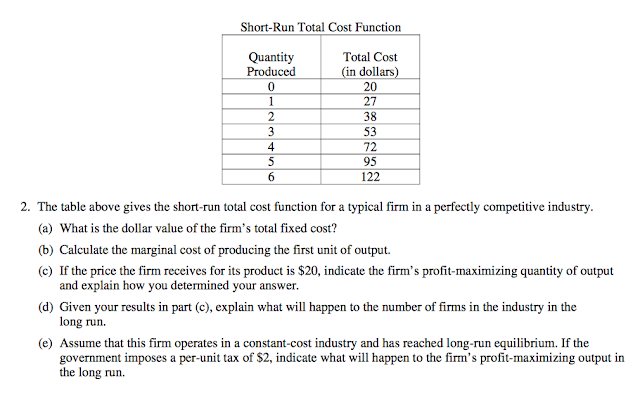Good Luck
Things to remember.
1. You have 1 hour and 10 minutes for the multiple choice section,,, pencil only,, no calculators,, plenty of time.,, draw graphs in the margins to help you answer the questions,, do not get hung up on one question,,, do the easy ones first and come back and ponder (SAT people) the hard ones. You know all of this so breathe and be brilliant.
2. You have 1 hour for the FRQs, this includes a ten minute reading section. Plan well,read the questions and underline the important parts,, but you can start writing during the 10 minute reading period,,, you do not have to wait to start writing. ((((use a pen only))) no coloured markers,, highlighters or white out.... If you start and then figure out that you have done something wrong,,,, quickly put a big X through it and start again.... Remember,, you know much more than they will be asking,,, show them what you know. Underline the important parts of the question,,, reread the questions to make sure you know what they are asking.
EXPLAIN Underline anytime you see the word EXPLAIN and EXPLAIN = WHY,,, Do not state,,, EXPLAIN, Complete sentences,, arrows on graphs,, but arrows in explanations need to be written out. Don't make them look and hunt for the answers,,, clearly labeled and underlined and/or circled the answer.
3. Eyes on your own paper
4. During the break,, do not touch anything related to economics,, or electronics.
5. The night before,,, (((( do not study until late))) Go to bed after a good bit of studying ,, but sleep and a clear head is better than cramming the night before.
6. The morning of the exam,,, eat breakfast and, then some kind of light snack before... Snacks and water are technically not allowed but almost all proctors allow it.
7. Study a bit more the morning of the exam,, you should be doing things you know well (Graphs),,, do not try and learn anything new the might before or the morning of the exam,,, do what you know and show yourself all you know.
8. Be confident,,, enjoy being tested and knowing that you will do well.
Mr w
Helpful and Nice review from Mr. Clifford,, Good Work. Mr. Clifford









































